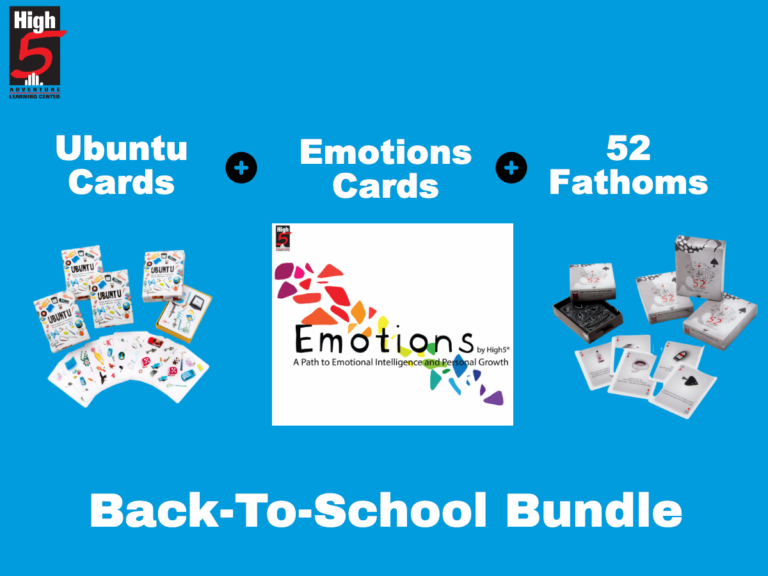CONNECTING WITH STUDENTS BACK-TO-SCHOOL
Written By: Ryan McCormick
Building and nurturing meaningful relationships with students is essential, especially during the back-to-school season and throughout the academic year. Inspired by the principles from the bestselling book The 5 Love Languages®, educators can create strong, lasting connections that resonate with students on a deeper level—fostering trust, engagement, and a supportive learning environment.
You may know The 5 Love Languages as the bestselling book on how to maintain healthy, loving relationships. The simple premise is that people show and receive love in different ways based on their personality, primarily gravitating to one of 5 “languages:” Words of Affirmation, Acts of Service, Spending Quality Time, Receiving Gifts, and Physical Touch.
Since its original publication, author Dr. Gary Chapman has expanded the concept to include an adaptation of the 5 Love Languages that describes the different ways in which children show they care and seek connection. This title, The 5 Love Languages of Children: The Secret to Loving Children Effectively (Chapman and Campbell, 2008) is also the model used by Jeanine Fitzgerald in her book The Dance of Interaction – A Guide to Managing Children’s Challenging Behavior (Fitzgerald, 2005).
The 5 Love Languages provides a simple, quick, and effective method for meeting our students’ back-to-school connection needs while acknowledging your connection style as an educator.
Words of Affirmation
Some people show they care or seek connection through language that uses words to affirm others. This is the student who may ask, “Did I do a good job?” or declares, “You’re the best teacher ever!” People who connect through affirmations tend to celebrate the efforts of others and in return seek the same appreciation.
In a virtual setting, this may be one of the easier connection styles to accommodate but it will take an intentional effort, especially for educators whose go-to connection style is not affirmation. Look for opportunities to authentically affirm the efforts of students, especially during times of stress. Even small expressions of appreciation can go a long way.
Acts of Service
For people whose love language is Acts of Service, thoughtful actions are preferred over words. This is the student who frequently offers to help out by organizing books or classroom supplies, volunteers to help clean up after activities, or helps other students with work. This style can be challenging with remote or hybrid learning, but with a little creative thinking can be accomplished. Find ways to include students in the planning process and solicit their ideas and help in planning and preparing for in-class or online sessions. The important thing will be to acknowledge their effort and help.
Spending Quality Time
This Love Language is about giving another person your undivided attention. In a teaching context, quality time is about the one-to-one individual time spent with a student. This can be immensely challenging in disruptive periods when your time becomes scarce. Keep in mind that the goal is quality time, not quantity time. Perhaps you can integrate some brief time during one-to-one check-ins with students to simply share stories, tell jokes, play a quick game, or simply show you care about them. Small interactions during one-to-one time can have a big impact on students.
Receiving Gifts
For some people, receiving a heartfelt gift is what makes them feel most loved. Gift givers are students who give you drawings or bring in little objects like interesting rocks or flowers from recess just for you. In fact, it may seem that they like giving more than receiving! This can be a challenging language to express in the disrupted teaching environment. Consider sharing a book, cartoon, or inspiring quote. As with all of the Love Languages, small, thoughtful efforts can have an outsized impact.
Physical Touch
The Love Language of appropriate physical touch isn’t typically expressed in educational settings. Many educators must, by policy or by personal preference, refrain from contact such as hugs or allowing a young student to take your hand. There’s also the reality that some people are just not comfortable with close physical contact. You can let students know you care by perhaps sharing a few high fives.
The most important thing we can do is to increase our awareness of how our students seek to connect. You can also use the Love Language framework with colleagues as a way of asking for and providing thoughtful, intentional support.
Remember the way in which a person shows love is often the way they feel loved. Becoming more aware of these styles can help strengthen the authentic connections that are crucial to helping students learn and educational communities to thrive.
Additional Resources
Strengthen Classroom Connections with Our Back-to-School Community Building Card Bundle!
Save $10 for a limited time through September 30, 2024.
Sign Up for High 5's E-Newsletter
Discover more SEL and student leadership development content when you sign up for our awesome monthly newsletter here!

